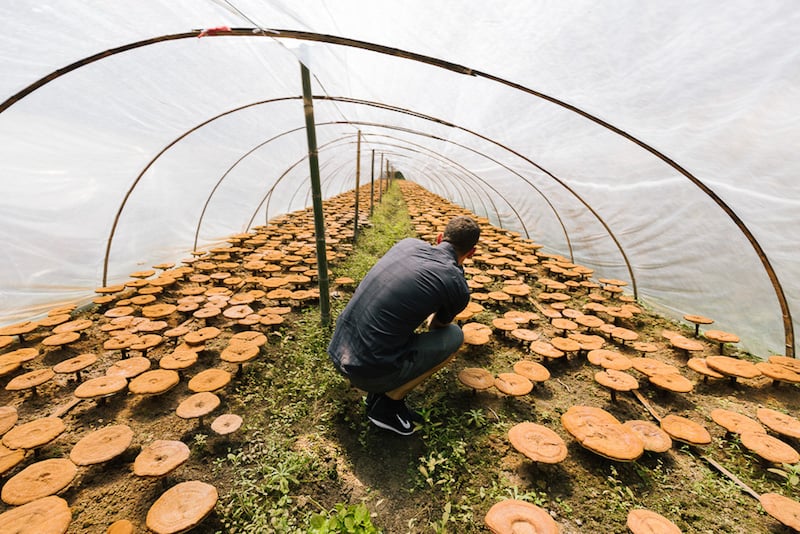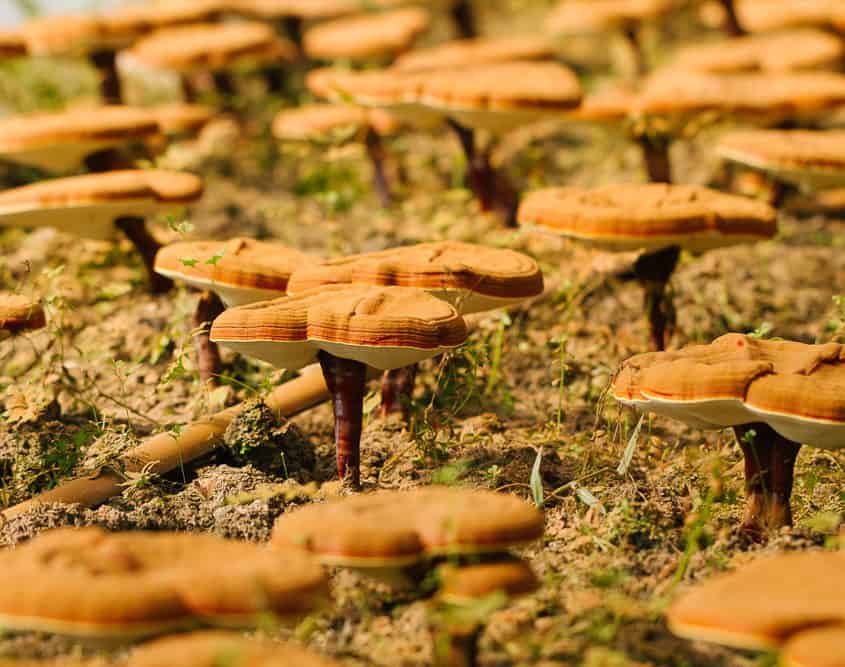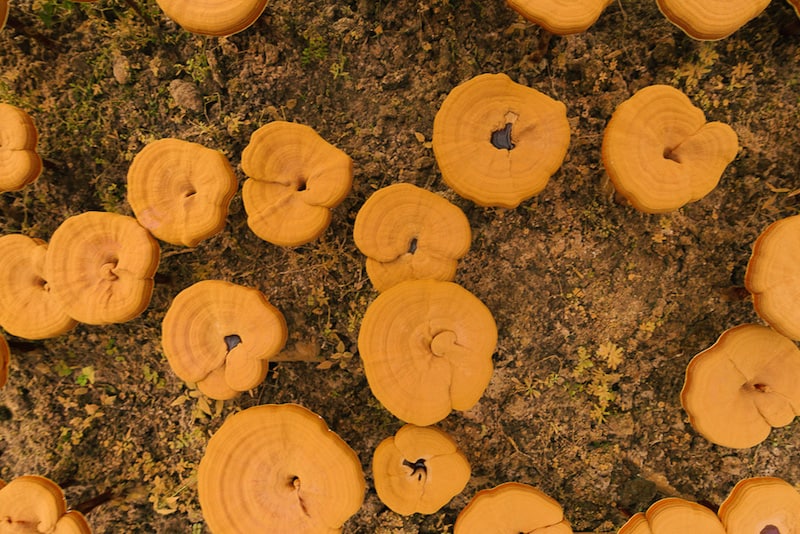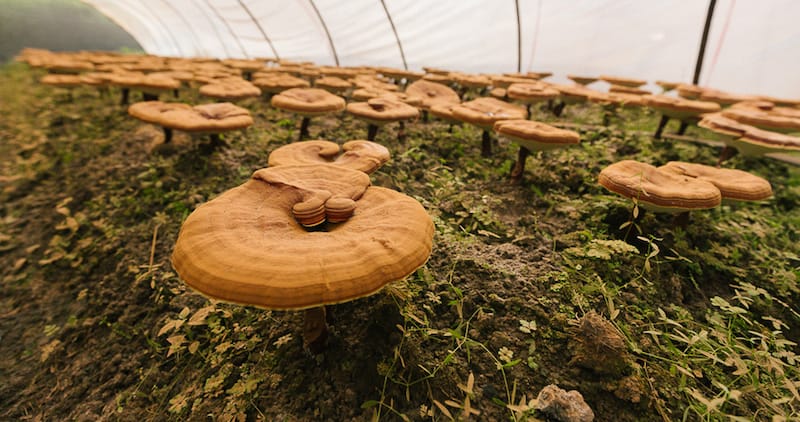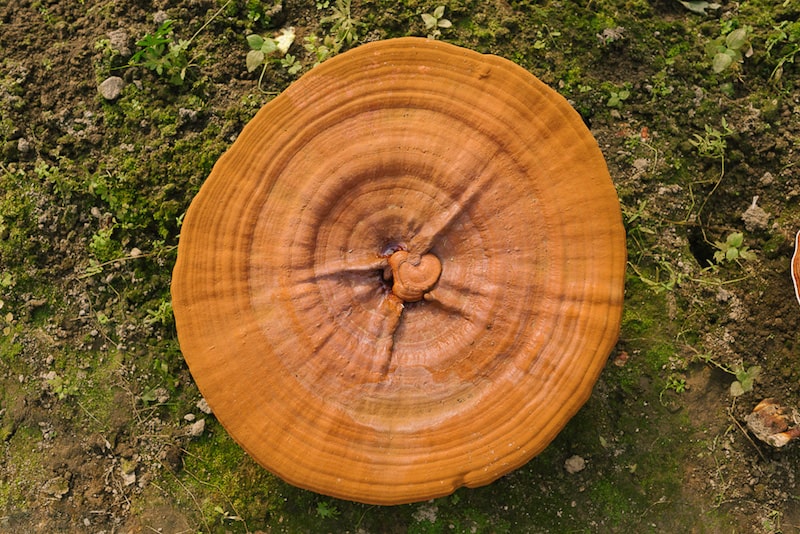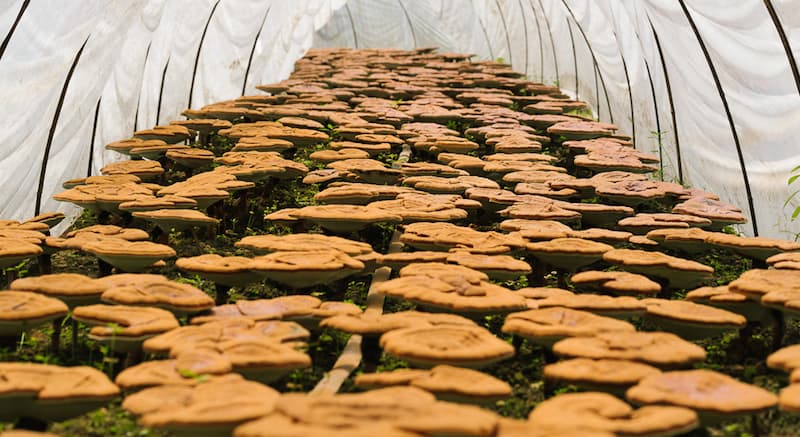China Adventures 2018 – The Reishi Harvest
Reishi is a warm temperature mushroom, growing and maturing during the summer in temperatures of 80F, and harvested in early September. With this in mind, we arrived in China on the first of September for our annual audit of mushroom farms. It had been a few years since we had visited reishi farms and we really wanted to see current practices.
Reishi is a very special species of mushroom. The botanical name for reishi is Ganoderma lucidum. Ganoderma means bright skin and lucidum refers to the shiny surface of this mushroom. So reishi is the mushroom with the shiny bright skin. That attribute along with the rams horn, spiral shaped cap make this mushroom one of the most beautifully distinctive of the medicinal species. (Please be aware that the botanical name has been changed to Ganoderma lingzhi)
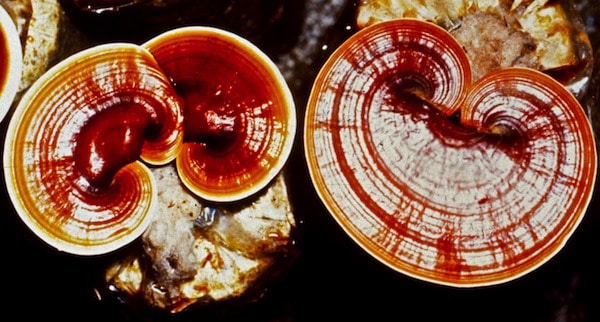
The beautiful spiral shape of reishi ©Nammex
Reishi is one of the few wood decomposing mushrooms that is grown in the ground. Due to this fact, reishi farms are often moved or fallowed after 2-3 years. This is possible and economical since there is often very little infrastructure other than simple greenhouses covered with shade cloth. So reishi grows in ambient temperatures with fresh air and fresh water, no artificial climate controlled rooms or grow houses.
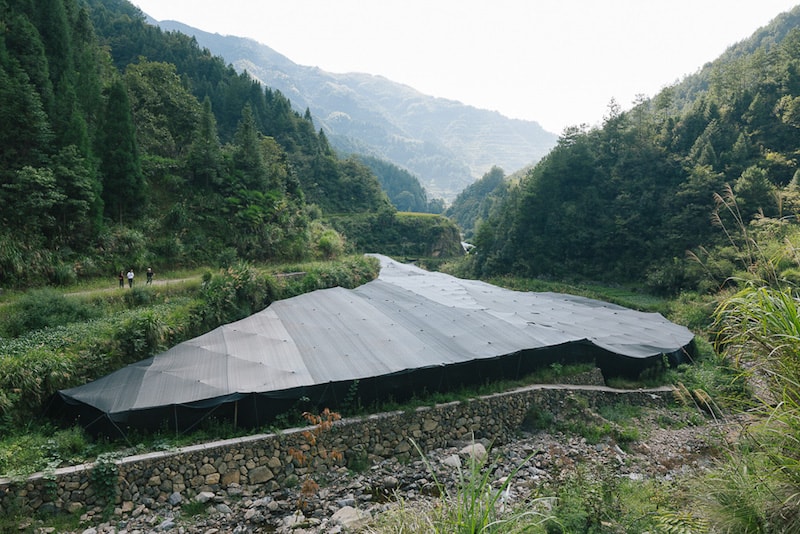
Organic Reishi Farm in China ©Nammex
The first farm was a 2 hour drive from the nearest small city and was located literally at the end of a road, far back into the mountains. A small, clean fresh water creek flowed by, adjacent to the shade houses. This was a new pristine location that was created in the spring of this year. Under the shade cloth were multiple smaller hoop-style plastic greenhouses. In general, the maturing reishi were growing on either side of a central path that allowed access from one end to the other.
This system of growing is now common throughout China. A pasteurized hardwood log is inoculated with the reishi spawn in January. Mushroom spawn is live mycelium on a carrier material, in this case, sawdust. By May, the log is fully colonized with the mycelium. At this time the log is placed in a long shallow earthen row. They are perfectly spaced to maximize the surface area of each row, and are now covered with a soil casing layer that will protect the logs from drying out and also supply water as the mushrooms grow. One or two mushrooms will be allowed to grow from each log and in order to achieve this, as the young mushrooms push through, they are meticulously pruned to insure the 2 mushroom per log standard.
We were able to visit four farms and review the harvest and the growing practices. We also spoke with the farmers and reviewed their practices and organic methods.
During our visit we also visited our friend, Dr. Edward Yang, of the Shanghai Normal University’s Institute of Immunology. I first met his father, Professor Yang Qing-yao back in the early 80’s and we had a very long and constructive friendship until his passing a few years ago. It was in this lab that Professor Yang developed turkey tail and was approved as a drug in China. With Edward’s help, we are doing some very interesting testing, which we’ll be able to tell you more about next year.
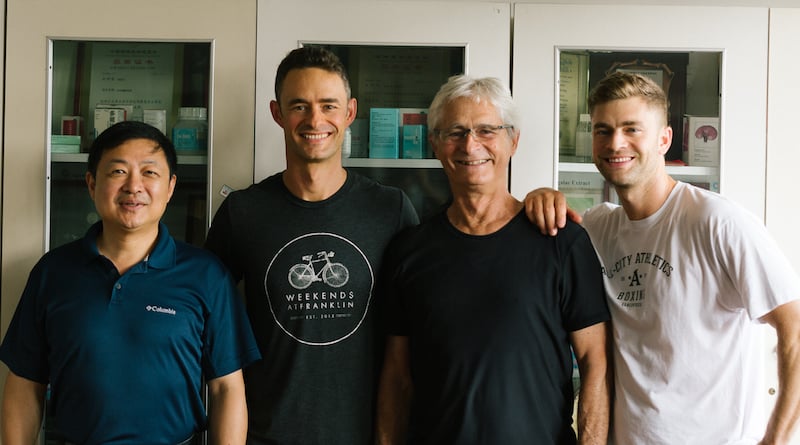
Left to right: Edward Yang, Skye Chilton, Jeff Chilton, Adam Chilton ©Nammex
Our yearly trips to China are always enjoyable, visiting new places and seeing old friends. And most of all, insuring that the quality of Nammex mushrooms and extracts continues to be the very best the world has to offer.
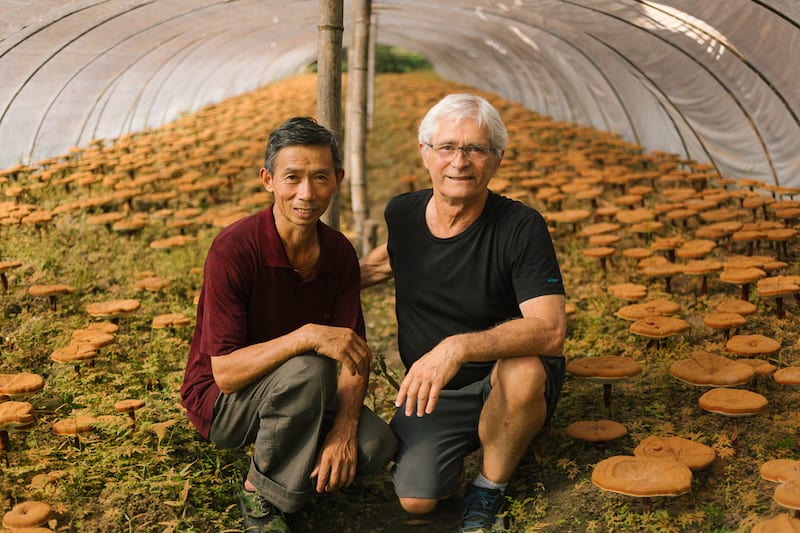
©Nammex

